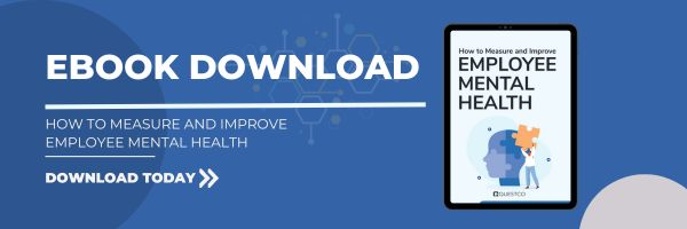Topic Employee Engagement
19 Ways to Create a Positive Work Culture

December 15, 2023 | By Questco Companies

The key to creating a positive and productive workplace starts from the top. But what exactly constitutes a "positive workplace"?
A positive workplace culture is an environment built on mutual trust, open communication, clear values, and a shared purpose that makes employees feel valued, respected, and engaged.
Meanwhile, a toxic workplace culture refers to an unhealthy, dysfunctional, and counterproductive work environment that has a negative impact on employees.
When done right, cultivating a positive culture pays dividends through more fulfilled employees, higher retention, and greater efficiency.
Benefits of a Positive Workplace for Employees
Workers aren't robots. They have needs beyond a paycheck. Cultivating a positive culture meets many of these needs—allowing employees to thrive personally and professionally. The benefits for staff are numerous.
For example, positive cultures inherently boost engagement by making people feel valued and invested in the organization's success. This leads to higher job satisfaction, better performance, and employees actively contributing their discretionary effort.
Additionally, environments built on trust and openness reduce workplace stress, enhance creativity due to increased psychological safety, and promote overall well-being.
A fulfilling culture makes the workplace somewhere employees want to be, not have to be. Ultimately, humans crave purpose and meaning. A positive culture gives them that while enabling self-actualization.
Benefits of a Positive Workplace for Business Owners
The benefits of a positive culture to employees directly translate to tangible gains for the organization.
To begin with, engaged and fulfilled employees simply perform better. They produce higher quality work and are more attentive, innovative, and productive overall—driving the bottom line.
Turnover is slashed as workers feel loyalty and a sense of belonging, preserving institutional knowledge.
A positive culture also becomes a competitive advantage in attracting top talent, especially among younger generations who prioritize company values and environment.
Unlocking discretionary effort saves on costs as employees work beyond goals without needing incentives. A positive culture leads to a self-reinforcing cycle: engaged employees deliver results, which enables growth, providing even more opportunities to motivate workers.
Leadership should consider it central to business strategy—a lever for performance just as critical as process or technology.
But before prescribing solutions, first you must diagnose the problem.
1. Perform a Culture Assessment
A culture assessment provides an understanding of your organization's existing culture. Resist the urge to make assumptions or rely on hunches. Instead, take an objective audit through reviews, surveys, and metrics. Anonymous employee surveys and pulse checks provide qualitative data to pinpoint strengths, weaknesses, values alignment, and areas of disconnect.
On the quantitative side, analyze relevant HR metrics over time--turnover, absenteeism, productivity, safety incidents--to identify trends tied to cultural health. Comparing against industry benchmarks also yields insights.
If current practices fall short, the gaps illuminated become opportunities for targeted improvement.
Most importantly, involve employees at all levels in the process. Regular listening provides an X-ray into their lived experience and priorities. By starting with rigorous evaluation, you gain an accurate understanding of the present state—and where your culture can still expand into its full potential.
2. Foster Open Communication
Communication is the lifeblood of culture. Leaders must listen attentively, invite authentic dialogue, share information freely, and frame things positively to encourage openness.
Provide channels for ongoing, bi-directional feedback without repercussion. Clarify decision rights and eliminate ambiguity so everyone understands how work gets done.
The goal is for employees to feel psychologically safe to voice opinions and provide input. With transparency, ideas and concerns won't fester in shadows. People want to be heard—so let them speak.

3. Show Employee Appreciation
Recognition is the superglue of culture. Public and private praise, especially when specific, makes employees feel genuinely valued for their contributions.
Discretionary bonuses for going above and beyond build engagement fast. Similarly, peer recognition is also powerful - consider programs where employees can nominate coworkers for rewards or recognition tied to company values.
Remember that a simple "thank you" goes a long way. Gratitude creates reciprocity, energizes teams, and fosters workplace relationships. Spotlighting achievements organization-wide inspires others.
And don't just appreciate output - praise the behaviors you want to see repeated, like collaboration, innovation, or empathy. Aim for recognition to be embedded holistically throughout the employee lifecycle. The more natural showing appreciation becomes, the more your culture will thrive.
4. Promote Employee Growth and Development
Employees are assets to be developed, not resources to be depleted.
Providing abundant learning and career development opportunities signals an organization's investment in its people. Sponsor external training and workshops relevant to roles. Offer access to online learning platforms like Udemy.
Formal mentorships and coaching build capabilities while strengthening workplace relationships. Activities like job shadowing foster insight into diverse functions. And be transparent about promotion paths - people want visibility into how they can progress professionally.
Growth opportunities enhance engagement and retention while ensuring the skills crucial to advancing corporate strategy. Employees should feel like they are leveling up both personally and professionally. A positive culture remains in motion - where all are empowered to reach their potential.
5. Enable Work-Life Balance and Autonomy
Work-life balance has become table stakes for a positive culture, especially post-pandemic. Offer maximum schedule flexibility, including remote work, compressed weeks, and flexible hours.
Be clear that personal life comes first, encouraging employees to disconnect after hours and take allotted vacation time. Ample paid time off policies show the organization cares about their holistic well-being.
At the same time, caregiving leave demonstrates that family is a priority. Support working parents through childcare stipends, extended maternity/paternity leave, and more. Where possible, accommodate employees with flexibility around religious observances as well. And consider leading by example through instituting company-wide recharge days. The workplace can't be all-consuming. Instead, integrate it seamlessly into the whole of employees' lives.

6. Create an Engaging Atmosphere
Play is Productive. While it may not seem obvious at first, injecting fun into the workday lifts engagement and creativity.
Host trivia or hackathon-style competitions between teams, awarding prizes for participation rather than just business results. Encourage "watercooler" collaboration by designing informal gathering spaces with fun themes.
Be sure you don't equate professionalism with sterility. The goal is to build camaraderie and an upbeat environment where people enjoy working.
7. Focus on Onboarding and Integration
Onboarding sets the tone from day one. Orientations should immerse new hires in company values, mission, and people. Ensure thorough training equips them with the hard and soft skills to excel at their role.
Try pairing each new hire with a peer mentor for insider guidance. Consider cohort programs where recruits bond as a group, seeding future collaborations.
Schedule 30/60/90-day check-ins to reinforce culture and get feedback on their experience. First impressions stick, so make onboarding a red-carpet experience. It becomes employees' first hands-on touchpoint with your culture vision. When done right, they'll feel welcomed, supported, and pumped to dive into meaningful work.
8. Optimize the Physical Workspace
Physical spaces impact psychological safety.
Evaluate lighting, noise, and layout for optimal focus and collaboration. Empower employees to make their workspace comfortable and personalized. Outdoor views and exposure to natural light boosts mood while plants purify the air.
Take cues from leading-edge offices at Google, Airbnb, and more. Thoughtful design choices remove environmental stressors, allowing people to do their best work while supporting health and well-being. Surround people with spaces where they want to be, not where they have to be.
9. Develop Trust in Leadership
Leaders set the tone. Executives and managers at all levels must embody the desired cultural attributes daily.
Listen attentively and communicate openly. Champion collaboration through actions - not just words. Make ethical choices, putting people before profits. Extend trust and resist micromanaging. Demonstrate vulnerability and authenticity in relationships.
Try to always keep an open door and make time for skip-level meetings. And critically, model work-life balance by not falling into always-on email and avoiding burnout yourself.
Culture forms at the top. If those steering the ship don't walk the walk on positive culture, how can it permeate the ranks? Leadership must be values-based, with culture a true north star versus lip service.
10. Define Company Values
Values drive behaviors. Clearly define your cultural values, anchoring them in authenticity. Then, continuously reinforce them through words and actions.
Highlight employees exemplifying values in staff meetings or newsletters. Incentivize through value-based recognition programs, where peers nominate coworkers. Ask values-based questions in interviews to assess fit.
You should also occasionally evaluate leaders on upholding values in their group's culture. New hires should be immersed in values from day one. Revisiting them annually ensures they remain relevant as the organization evolves.
Values are only words on paper without conscious activation. But when operationalized into every process and communication, they become vital to keeping your culture on course.
11. Implement Ethical Policies and Codes of Conduct
Rules of the road enable trust. Institute clear ethical policies and codes of conduct so all employees understand expectations for professional behavior. Then, enforce them consistently, regardless of rank or tenure.
Provide safe channels for reporting issues without fear of retaliation. Compliance builds confidence that the organization lives by its ideals. Annual ethics training reinforces standards, as do values-based performance reviews.
When inevitable mistakes occur, address incidents with the goal of growth - not punishment. Ethical foundations allow employees to focus on their work versus worrying about risks of questionable dealings in the background. They know leadership has established guardrails guiding choices, putting people over profits when required.
12. Encourage Interdepartmental Collaboration
Departmental silos stifle culture. Build cross-departmental collaboration through job rotations, enterprise social networks, and multidisciplinary teams. Sponsor activities that mix groups - volunteer days bring people together around a shared purpose, as do "lunch & learns" on topics broadening perspectives.
Consider encouraging collaboration through workplace design - create open floorplans and shared amenities. Destroying silos helps all employees feel part of something larger than just their functional team. It increases agility through insight sharing and relationships that enhance communication beyond simply going "through proper channels."
13. Allow Employees to Personalize Workspaces
Personal expression builds bonds. Allowing employees to put their unique stamp on the workplace makes it more welcoming and fun.
Have their nameplates feature a personal photo or quote. Enable creative freedom in decorating office areas with unique items.
You can even create digital badging for interests like pets, sports teams or alma maters.
The more comfortable people feel injecting their identities into work, the more their guard drops. Let people's authentic selves shine through - you'll be surprised by what emerges.

14. Foster Creativity through Fun
Silliness is underrated. While work can't always be fun and games, injecting an element of lightheartedness lifts spirits and relationships. For example, plan office outings for bowling or escape rooms to blow off steam.
Alternatively (or in tandem), you can decorate communal spaces with humor - one company has a stuffed moose icon indicating "loose moose" mode where meetings can't be booked.
Enable creativity by allowing gag gifts at holiday parties. Model not taking yourself too seriously as a leader through appropriate humor.
Laughter forges bonds that enhance information sharing and collaboration. An upbeat tenor keeps energy and morale high even when workloads intensify. As long as it is aligned with values, allowing degrees of appropriate irreverence makes the workplace where employees want to be.
15. Sponsor Volunteer Opportunities
Serving together unites people. Sponsor volunteer activities aligning with your organization's values and purpose.
Beautifying community parks or packing meals for underserved groups brings employees together around shared goals beyond profits. Schedule paid time off for employees to volunteer individually, supporting causes they care about.
Onboarding could even commence with a group volunteering effort, seeding the culture you aspire to. Corporate social responsibility (CSR) and sustainability initiatives also rally people to a joint mission.
Enabling employees to serve society tangibly demonstrates that your organization stands for more than just shareholder returns. And forging bonds through elevating your community leaves all parties stronger.
16. Offer Wellness Initiatives and Benefits
Wellness fosters wholeness. Support employees' physical and mental health through benefits, resources, and programs.
On-site fitness classes can relieve stress while building community. Healthy snacks in common areas model good nutrition.
Sponsor mindfulness and meditation sessions, which are proven to combat burnout. Allow mental health days separate from sick time. And emphasize holistic well-being in company policies.
When companies invest in the whole person, employees reciprocate through higher performance. People want to feel cared for beyond just professional obligations. Promoting multifaceted wellness makes the workplace not just a place to work but also a place to recharge and grow in all aspects of life.
17. Provide Ergonomic Equipment and Amenities
Ergonomics enhance comfort and health. Provide standing desks for those who desire and quality office chairs supporting proper posture.
Dual monitors and wrist rests protect physiques from repetitive strain. On-site chiropractic or massage addresses lingering aches and pains
Be sure to encourage movement through walking meetings or allowing exercise ball chairs. Thoughtful design choices remove physical stressors while supporting overall well-being.
People work best without environmental discomforts nagging their focus. The basics, like ergonomic equipment and stretching opportunities, are simple yet powerful ingredients in a positive culture recipe.
18. Maintain Cultural Improvements
With culture, you're never "done" as a leader. Complacency kills.
Regular listening provides an X-ray into employees' lived experiences, hopes, and concerns. Pulse surveys, focus groups, and suggestion boxes create safe spaces for anonymous input.
Every meeting should end with a reflection on what went well and what could improve. At the same time, annual engagement surveys illuminate strengths and blindspots. Trending exit interview themes indicate areas for attention.
Finally, continual feedback is the lifeblood of cultural evolution. Without it, you risk missing deteriorations over time. What made people excited and motivated when starting can shift after months of being immersed in reality.
Listen first, then address findings openly and with empathy. People want to be heard, not necessarily agreed with. Thoughtful handling of input keeps all moving constructively towards aspirations. Measuring success allows you to walk the talk on cultural priorities, but never take your foot off the gas in nurturing your culture.
19. Partner with a PEO
It might seem counter-intuitive to argue that HR outsourcing can improve company culture. However, professional employer organizations (PEOs) offer streamlined ways to achieve the above cultural accomplishments.
Creating and nurturing a thriving culture requires expertise plus dedicated staff. A PEO becomes an extension of your HR team - specialists handling key elements from talent management to compliance so leaders and in-house HR teams can focus elsewhere.
A PEO partner will:
- Conduct cultural assessments providing data-driven insights
- Craft values, policies and programs bringing your aspirations into reality
- Develop leaders through coaching on inclusive behaviors
- Implement performance management emphasizing growth
- Facilitate sophisticated recognition and rewards platforms
- Provide pulse survey capabilities monitoring engagement
- Supply training and support at every stage from hiring through retirement
In essence, a PEO acts as a culture catalyst by making visions scalable through proven frameworks. Their independence also means they objectively identify blindspots. That means that a PEO can furnish the capabilities and sophistication to conceive your culture and enact it holistically.

The Best Combination of Positive Workplace Cultural Practices
A positive culture lifts organizations by fulfilling fundamental human needs for purpose, belonging, and growth. While the journey requires commitment, the rewards are profound across productivity, retention, innovation, and reputation.
A PEO is an invaluable ally providing strategic guidance combined with hands-on implementation across the employee lifecycle. With their counsel and resources, your cultural aspirations can convert into everyday realities.
Partnering with a PEO provides the blueprint and tools to architect something remarkable: a workplace where people are inspired to bring their best selves. The climb requires courage, but the view from the summit makes it all worthwhile.



